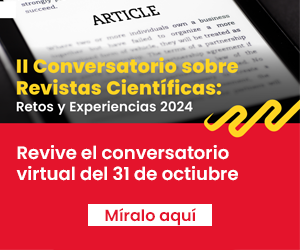Perfil epidemiológico de los pacientes con secuelas de accidente cerebrovascular atendidos en un instituto de rehabilitación de Lima-Perú
DOI:
https://doi.org/10.20453/rmh.v34i3.4922Palabras clave:
Rehabilitación neurológica, enfermedad crónica, conductas relacionadas con la saludResumen
Objetivo: Describir el perfil epidemiológico de los pacientes con secuelas de accidente cerebrovascular (ACV) atendidos en un instituto de rehabilitación de Lima-Perú. Material y métodos: Estudio observacional, transversal, descriptivo y relacional, de los pacientes con secuelas de ACV atendidos en el periodo 2013 al 2019, en el Instituto Nacional de Rehabilitación “Dra. Adriana Rebaza Flores” AMISTAD PERÚ-JAPÓN. Se recolectaron datos de variables sociodemográficas, clínicas, enfermedades crónicas, hábitos nocivos y medicamentos. Resultados: El 71,5% de pacientes tenían secuelas de ACV de etiología isquémica y el 87,6% secuelas moderadas o severas. La mayor frecuencia de pacientes con secuela de ACV isquémico fue a partir de los 56 años (80,7%); mientras que en el ACV hemorrágico fue a partir de los 46 años (61,8%). El 81,7% presentó hemiplejía, el 58% deficiencia en la comunicación y solo el 2,1% en la audición, el 67,3% hipertensión arterial y el 16,1% refirió algún grado de consumo de tabaco. La mayoría de los pacientes con secuelas leves, moderadas y severas eran casados o convivientes. A mayor severidad, era mayor el porcentaje de mujeres, personas mayores e iletradas. Conclusiones: La mayoría de los pacientes con ACV tenían secuelas moderadas o graves, hemiplejía, deficiencia de la comunicación e hipertensión. Los pacientes con ACV isquémico tenían mayor edad que aquellos con ACV hemorrágico. A mayor severidad, había mayor porcentaje de personas mayores, mujeres e iletrados.
Descargas
Citas
GBD 2015 Mortality and Causes of Death Collaborators. Global, regional, and national life expectancy, all-cause mortality, and cause-specific mortality for 249 causes of death, 1980–2015: a systematic analysis for the Global Burden of Disease Study 2015. Lancet. 2016; 388(10053):1459-544. doi: 10.1016/S0140-6736(16)31012-1
GBD 2015 Neurological Disorders Collaborator Group. Global, regional, and national burden of neurological disorders during 1990–2015: a systematic analysis for the Global Burden of Disease Study 2015. Lancet Neurol. 2017; 16(11):877-97. doi: 10.1016/S1474-4422(17)30299-5
Feigin VL, Norrving B, Mensah GA. Global Burden of Stroke. Circ Res. 2017;120(3):439-48. doi: 10.1161/CIRCRESAHA.116.30841
Castañeda Canario AA, Esteves Castañeda RF. Evolución clínica en pacientes con enfermedad cerebrovascular de tres hospitales del norte del Perú: 2017 – 2018. Tesis Pregrado. Chiclayo: Facultad de Medicina, Universidad Católica Santo Toribio de Mogrovejo; 2020. (Citado 31 de mayo de 2022). Disponible en: https://tesis.usat.edu.pe/handle/20.500.12423/2402
Cañizares-Villalba MJ, Calderón-Salavarría K, Vásquez-Cedeño D. Mortalidad y discapacidad posterior a un primer episodio de enfermedad cerebrovascular en Guayaquil, Ecuador. Neurol Argentina. 2019; 11(2):61-6. doi: 10.1016/j.neuarg.2019.02.002
Ministerio de Salud. Norma Técnica de Salud de la Unidad Productora de Servicios de Medicina de Rehabilitación (Internet). 2009 (Citado 31 de mayo de 2022). Disponible en: https://conadisperu.gob.pe/observatorio/normativa/norma-tecnica-de-salud-de-la-unidad-productora-de-servicios-de-medicina-de-rehabilitacion-nts-079-minsa-dgsp-inr-v-01/
Ministerio de Salud. Norma Técnica de Salud «Categorías de Establecimientos del Sector Salud» (Internet). 2011 (Citado 31 de mayo de 2022). Disponible en: https://www.gob.pe/institucion/minsa/normas-legales/243402-546-2011-minsa
Drault Boedo ME, Abudarham J, Barbalaco L, Dilascio S, Gallo S, Garcete LA, et al. Tiempo de evolución en sujetos con secuela de accidente cerebrovascular al ingreso a un Instituto de Rehabilitación de la Ciudad de Buenos Aires: estudio descriptivo, transversal y retrospectivo. Neurol Argentina. 2019;11(2):81-7. doi: 10.1016/j.neuarg.2019.02.006
Zhang J, Wang Y, Wang G nan, Sun T, Shi J quan, Xiao H, et al. Clinical factors in patients with ischemic versus hemorrhagic stroke in East China. World J Emerg Med. 2011;2(1):18-23. doi: 10.5847/wjem.j.1920-8642.2011.01.003
Cantú-Brito C, Ruiz-Sandoval JL, Chiquete E, Arauz A, León-Jiménez C, Murillo-Bonilla LM, et al. Factores de riesgo, causas y pronóstico de los tipos de enfermedad vascular cerebral en México: Estudio RENAMEVASC. Rev Mex Neurocienc. 2011;12(5):224-34. (Citado 31 de mayo de 2022). Disponible en: https://www.medigraphic.com/cgi-bin/new/resumen.cgi?IDARTICULO=44827
Chauhan G, Debette S. Genetic Risk Factors for Ischemic and Hemorrhagic Stroke. Curr Cardiol Rep. 2016; 18(12):124. doi: 10.1007/s11886-016-0804-z.
Kuriakose D, Xiao Z. Pathophysiology and treatment of stroke: Present status and future perspectives. Int J Mol Sci. 2020; 21(20):7609. doi: 10.3390/ijms21207609.
Boehme AK, Esenwa C, Elkind MSV. Stroke Risk Factors, Genetics, and Prevention. Circ Res. 2017; 120(3):472-95. doi: 10.1161/CIRCRESAHA.116.308398
Olsen TS, Andersen KK. Female survival advantage relates to male inferiority rather than female superiority: A hypothesis based on the impact of age and stroke severity on 1-week to 1-year case fatality in 40,155 men and women. Gend Med. 2010; 7(4):284-95. doi: 10.1016/j.genm.2010.08.001
Ahangar AA, Saadat P, Heidari B, Taheri ST, Alijanpour S. Sex difference in types and distribution of risk factors in ischemic and hemorrhagic stroke. Int J Stroke. 2018; 13(1):83-6. doi: 10.1177/1747493017724626
Xing Y, An Z, Zhang X, Yu N, Zhao W, Ning X, et al. Sex differences in the clinical features, risk factors, and outcomes of intracerebral hemorrhage: A large hospital-based stroke registry in China. Sci Rep. 2017; 7(1):286. doi: 10.1038/s41598-017-00383-6
Girijala RL, Sohrabji F, Bush RL. Sex differences in stroke: Review of current knowledge and evidence. Vasc Med. 2017; 22(2):135-45. doi: 10.1177/1358863X16668263
Appelros P, Stegmayr B, Terent A. Sex differences in stroke epidemiology: A systematic review. Stroke. 2009; 40(4):1082-90. doi: 10.1161/STROKEAHA.108.540781
Bindawas SM, Mawajdeh HM, Vennu VS, Alhaidary HM. Functional recovery differences after stroke rehabilitation in patients with uni- or bilateral hemiparesis. Neurosciences. 2017; 22(3):186. doi: 10.17712/nsj.2017.3.20170010
Mitchell C, Gittins M, Tyson S, Vail A, Conroy P, Paley L, et al. Prevalence of aphasia and dysarthria among inpatient stroke survivors: describing the population, therapy provision and outcomes on discharge. Aphasiology. 2021; 35(7):950-60. doi: 10.1080/02687038.2020.1759772
Kim G, Min D, Lee E ok, Kang EK. Impact of Co-occurring Dysarthria and Aphasia on Functional Recovery in Post-stroke Patients. Ann Rehabil Med. 2016; 40(6):1010. doi: 10.5535/arm.2016.40.6.1010.
Cohen DL, Roffe C, Beavan J, Blackett B, Fairfield CA, Hamdy S, et al. Post-stroke dysphagia: A review and design considerations for future trials. Int J Stroke. 2016; 11(4):399-411. doi: 10.1177/1747493016639057
Semrau JA, Herter TM, Scott SH, Dukelow SP. Differential loss of position sense and kinesthesia in sub-acute stroke. Cortex. 2019; 121:414-26. doi: 10.1159/000333373.
Klingner CM, Witte OW, Günther A. Sensory syndromes. Front Neurol Neurosci. 2012; 30:4-8. doi: 10.1159/000333373.
Bamiou DE. Hearing disorders in stroke. Handb Clin Neurol. 2015; 129:633-47. doi: 10.1016/B978-0-444-62630-1.00035-4
Sand KM, Midelfart A, Thomassen L, Melms A, Wilhelm H, Hoff JM. Visual impairment in stroke patients - a review. Acta Neurol Scand. 2013; 127(S196):52-6. doi: 10.1111/ane.12050
Rowe FJ, Wright D, Brand D, Maan T, Peel S, Akerman N, et al. Vision In Stroke cohort: Profile overview of visual impairment. Brain Behav. 2017; 7(11):e00771. doi: 10.1002/brb3.771
Arauz A, Ruiz-Franco A. Enfermedad vascular cerebral. Rev Fac Med (Méx). 2012; 55(3):11–21. (Citado 11 de julio de 2023) Disponible en: https://www.scielo.org.mx/scielo.php?script=sci_arttext&pid=S0026-17422012000300003
O’Donnell MJ, Denis X, Liu L, Zhang H, Chin SL, Rao-Melacini P, et al. Risk factors for ischaemic and intracerebral haemorrhagic stroke in 22 countries (the INTERSTROKE study): A case-control study. Lancet. 2010; 376(9735):112-23. doi: 10.1016/S0140-6736(10)60834-3
Comisión Interamericana para el Control del Abuso de Drogas (CICAD). Informe sobre el consumo de drogas en las Américas 2019. Washington, D.C.: Control del Abuso de Drogas (CICAD), Organización de los Estados Americanos (OEA); 2019. (Citado 31 de mayo de 2022). Disponible en: http://cicad.oas.org/Main/ssMain/HTML REPORT DRUG 2019/mobile/index.html
Organización Panamericana de la Salud. Informe sobre la situación mundial de alcohol y la salud 2018. Resumen. Washington, D.C.: Organización Panamericana de la Salud, Organización Mundial de la Salud; 2019 (Citado 31 de mayo de 2022). Disponible en: https://iris.paho.org/handle/10665.2/51352
Kaushal K. Social desirability bias in face to face interviews. J Postgrad Med. 2014; 60(4):415-6. doi: 10.4103/0022-3859.143989
Bhalla A, Wang Y, Rudd A, Wolfe CDA. Differences in outcome and predictors between ischemic and intracerebral hemorrhage: The South London Stroke Register. Stroke. 2013; 44(8):2174-81. doi: 10.1161/STROKEAHA.113.001263
Salech F, Jara R, Michea L. Cambios fisiológicos asociados al envejecimiento. Rev méd. Clín. Las Condes. 2012; 23(1):19-29. doi: 10.1016/S0716-8640(12)70269-9
Phan HT, Reeves MJ, Blizzard CL, Thrift AG, Cadilhac DA, Sturm J, et al. Sex differences in severity of stroke in the INSTRUCT study: A meta-analysis of individual participant data. J Am Heart Assoc. 2019; 8(1): e010235. doi: 10.1161/JAHA.118.010235
Olmedo-Vega V, Aguilar-Idáñez MJ, Arenillas-Lara JF. Análisis de factores asociados a la recuperación integral de pacientes de ictus al alta de hospital de agudos. Rev Esp Salud Pública. 2019; 93:e201910103. (Citado 31 de mayo de 2022). Disponible en: http://scielo.isciii.es/scielo.php?script=sci_arttext&pid=S1135-57272019000100036&lng=es.
Olascoaga-Arrate A, Freijo-Guerrero MM, Fernández-Maiztegi C, Azkune-Calle I, Silvariño-Fernández R, Fernández-Rodríguez M, et al. Relationship between level of education and one-year survival after ischaemic stroke. Rev Neurol. 2019;68(4):147-54. doi: 10.33588/rn.6804.2018254
García-Rudolph A, Cegarra B, Saurí J, Opisso E, Tormos JM, Bernabeu M. El impacto del nivel educativo en las valoraciones cognitivas de los pacientes jóvenes ingresados en rehabilitación tras un ictus isquémico. Rehabilitación (Madr). 2021; 56(4):264-273. doi: 10.1016/j.rh.2021.09.005
Publicado
Cómo citar
Número
Sección
Licencia
Los autores ceden sus derechos a la RMH para que esta divulgue el artículo a través de los medios que disponga. Los autores mantienen el derecho a compartir, copiar, distribuir, ejecutar y comunicar públicamente su artículo, o parte de él, mencionando la publicación original en la revista.

















